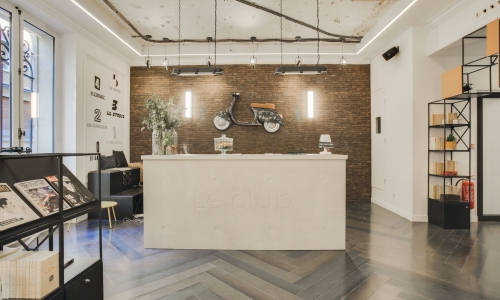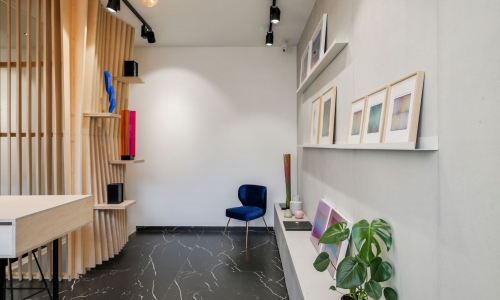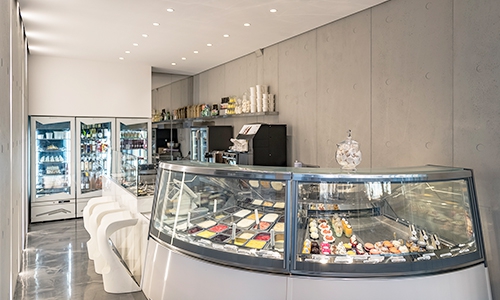Our concrete’s genuine properties and high performance
Our next generation concrete is breaking into new fields such as design and interior decoration. This new trend is largely inspired by the so-called ‘modernism’ movement based on strong shapes and functionality. Key figures in that movement include Le Corbusier, Oscar Niemeyer, Adolf Loos and Auguste Perret.
Concrete is a blend of cement (acting as the binder), aggregate (sand and gravel), water and additives. Its quality and performance depend on those of its components and their ratios.
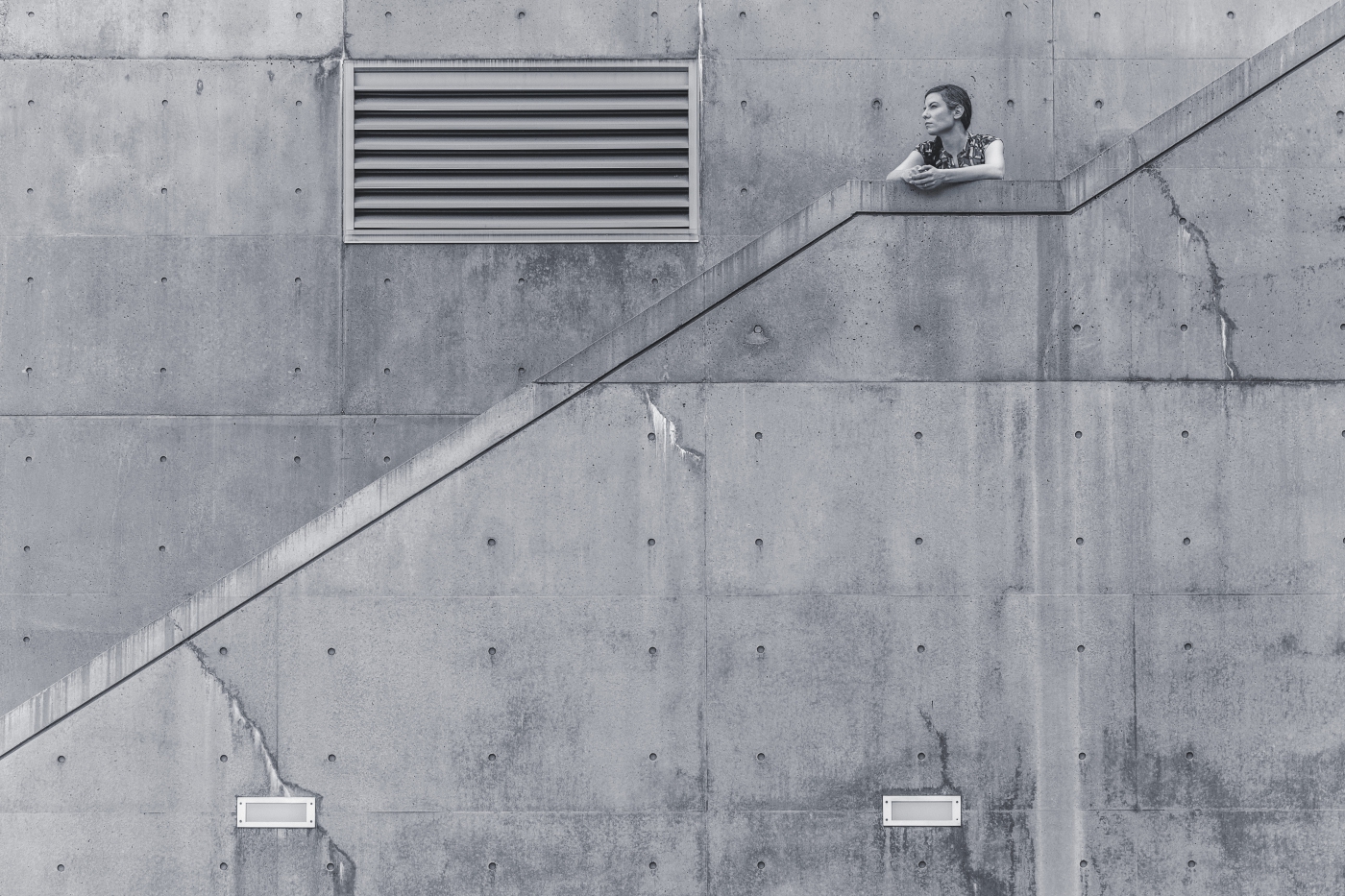
Previously people talked about concrete, but today we must talk about concretes as there are many different types. This material used to be quite forgiving and its performance was not significantly affected by its manufacture or use. However, new concretes offer much high levels of performance. Concrete in all its compositions is now the second-most consumed material in the world, after water.
Concretes form a family with Very High Performance Concretes (VHPC) and Ultra-High-Performance Fibre-Reinforced Concretes (UHPFRC). They share the property of containing minimal water (only 35 litres per cubic metre compared to 110-120 litres per cubic metre for traditional concrete) and deliver maximum properties.
Concrete LCDA does not manufacture structural concrete pieces. Our core business is creating fibre-reinforced concrete panels and furnishings for interior decoration.
Two looks, two types of concrete
When designing bespoke concrete furnishings (counters, reception desks, tables, worktops, etc.), our R&D team listens to what your project needs and offers the most suitable technology for your budget and preferences.
Our concrete is coloured using the integral colour method and natural pigments. This means we can offer a vast colour range and deliver great UV resistance.
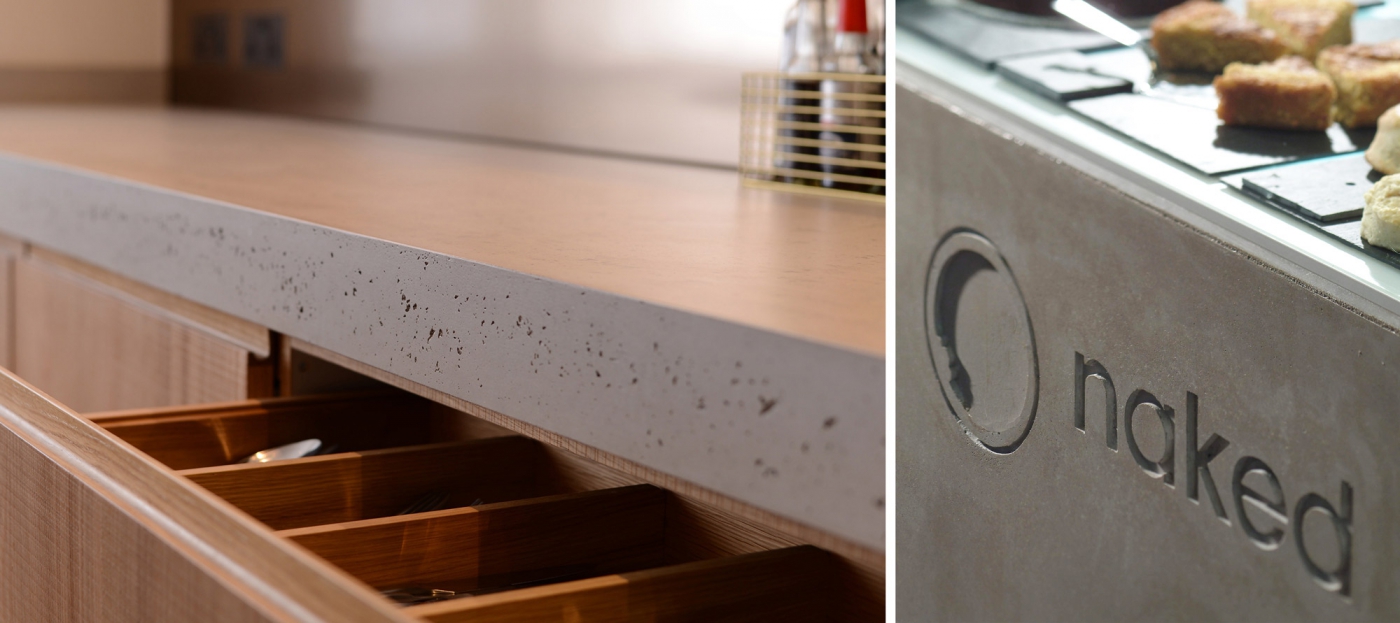
We produce two types of fibre-reinforced concrete:
- Concrete with an ‘authentic, unfinished’ look: these are controlled weight concrete pieces with rough patches, such as our decorative panels. At Concrete LCDA, we use our own fibre-reinforced concrete recipe when designing decorative panels in order to produce very thin, extremely lightweight, robust panels.
- Concrete with a ‘smooth’ look: these are smooth mineral concrete pieces. Our UHPFRC (Ultra-High-Performance Fibre-Reinforced Concrete) boasts compression resistance up to six times that of traditional concrete. It delivers great abrasion, pollution and scratch resistance thanks to its low porosity. This flowing material can hug the tiniest details on formwork, offering creators and designers a vast range of possibilities. We have developed this technique for use in creating outstanding concrete pieces such as solid concrete items and large-scale thin countertops.
Products to suit all needs
Whether you prefer an unfinished or a smooth look, we use several techniques to create pieces that match your expectations:

Our Beton Lege® technology
Beton Lege® is exclusive technology developed by our company. It involves an extremely lightweight fibre-reinforced concrete structure with effective protection against scratches and stains. Unlike polished concrete and concrete coatings, which are quite fragile, Beton Lege® with its fibres provides significant resistance properties.
Thanks to our Beton Lege® technology, we are constantly pushing the limits of the material. Our concrete is lighter and thinner. We can offer our customers all-new shapes and designs through this technology made of concrete and composite materials.
On average, the weight of our Beton Lege® pieces is three times less than the same piece in standard fibre-reinforced concrete. This unique technology has been developed through many years of research, enabling us to now offer you all the benefits of concrete without its main disadvantages. By making it lighter, the material is no longer fighting against its own weight. This gives creators, designers and architects the freedom to create daring — and now feasible — designs.
In our opinion, it is essential to respect the material. Beton Lege® is a genuine, living, mineral fibre-reinforced concrete material. Numerous imitation concretes have emerged (concrete coatings, polished concrete, etc.), which have tarnished concrete’s image. In reality, those are fragile synthetic materials covering a core generally made of cardboard or wood.
Solid concrete, concrete shells, etc.
The other techniques used, including solid concrete and concrete shells, open up numerous possibilities thanks to their great adaptability. In the case of a solid shell, this is a monolithic hollow seamless mass.
Treated and protected concrete
In order to protect and preserve our concrete pieces, we offer protective treatments applied by our teams in the workshop. These treatments include a dust fixative and protect the concrete from stains. An enhanced water repellent treatment is also available on request for areas with a significant risk of spatter and/or with heavy foot traffic.
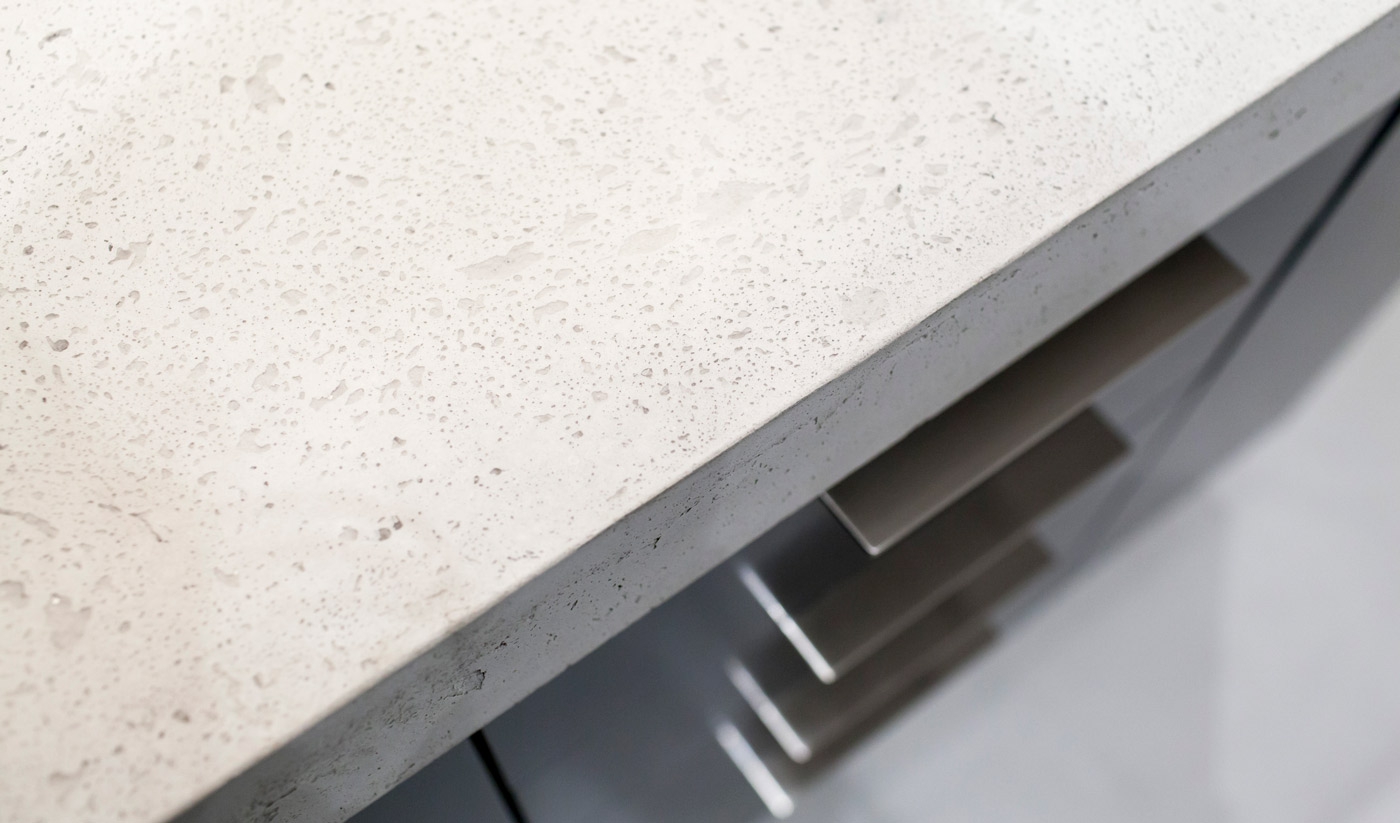
For bespoke pieces such as bars, countertops, worktops and sideboards, we also apply enhanced protective treatments such as resin or varnish to provide the surface with effective protection against stains and scratches (unlike polished concrete or concrete coatings which are very fragile). Our concrete pieces are also highly fire-resistant.
All our products are easy to clean using a damp microfibre cloth (potentially with a neutral, non-corrosive cleaning product like black soap).
Visit our Bespoke page to find out more about our creations for retail design, kitchen worktops, bathroom basins and more.
Photo credits: ©Maxwell Pinborough Ltd, ©Julian Renard





